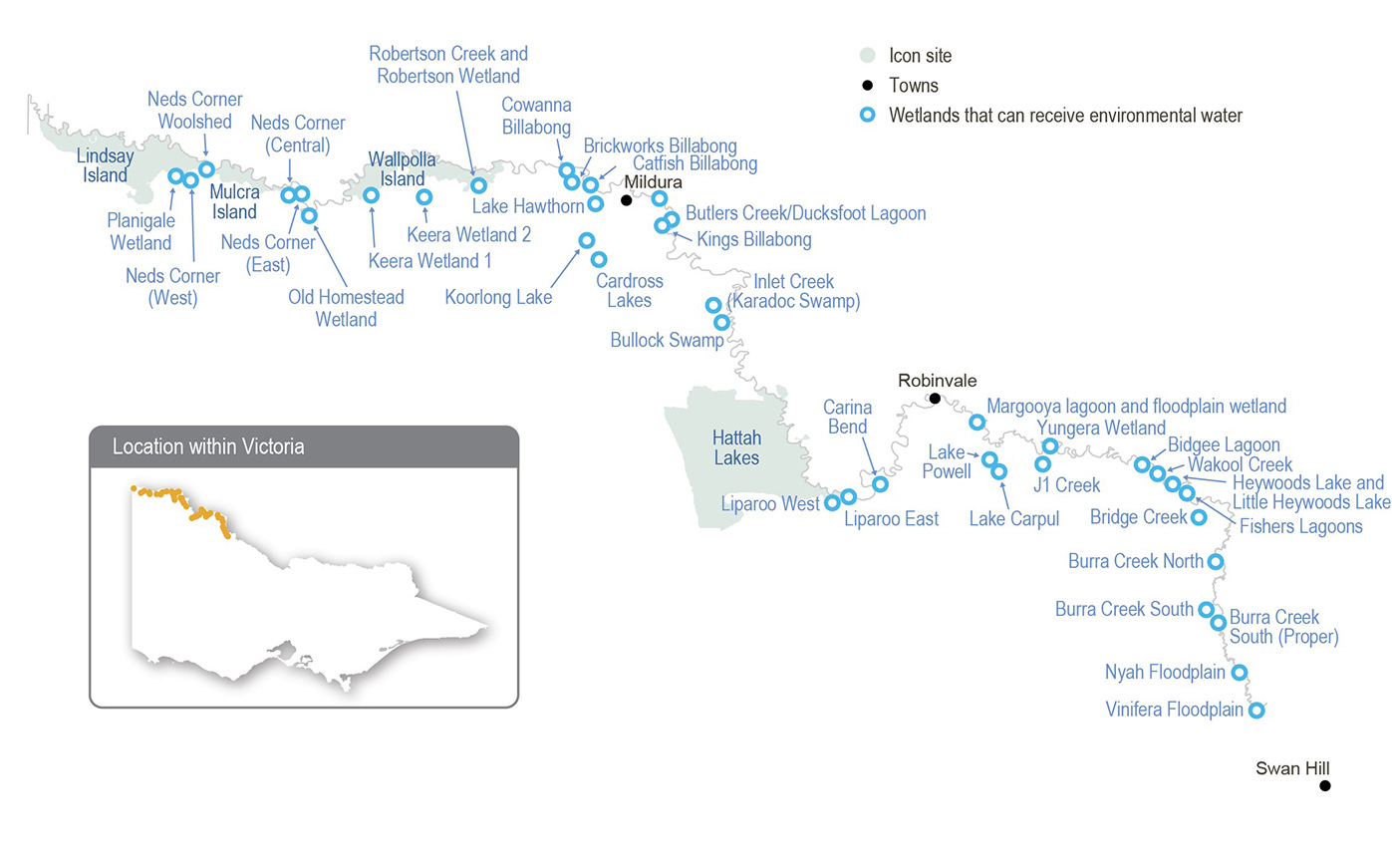Regulation and diversion of the Murray River flow have substantially reduced the frequency and duration of the high river flow that would naturally water the lower Murray wetlands. This change to the water regime has been exacerbated by climate change and has reduced the variety and condition of environmental values associated with billabongs and other floodplain habitats.
Water for the environment can be delivered to some wetlands in the region through direct pumping from the Murray River and/or the use of irrigation supply infrastructure. Most wetlands that receive environmental flows can be managed independently of each other.
